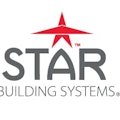The cost of shipping by truck has been increasing due to a combination of conditions, including a long-running and worsening shortage of truck drivers, minimal increases in driver pay, and a new required logging device that prevents drivers from cheating on safety requirements. Several major companies that ship large quantities of goods are reporting increases of 10% or more in shipping costs.
The “capacity crisis” that many shipping companies are talking about is a basic supply-and-demand issue. As the economy continues to recover from the Great Recession, the number of shipments requiring trucks continues to increase. The number of available trucks and, more significantly, available drivers has not kept pace. Some companies, forced to cut back on their fleets during the depth of the recession, have not fully restored capacity. And, as with many other sectors of the economy, most drivers’ pay has not seen a substantial increase, even though other economic indicators such as the stock market have moved ahead.
The result is a situation where new drivers are not entering the business fast enough. Millenials are apparently not interested in working the long hours and enduring the hardships of weeks on the road, at least not for the pay that trucking firms are offering. The median age of long-haul truckers in the US is now somewhere around 55. To combat the issue, some trucking firms are giving sizeable bonuses and other sweeteners to retain their drivers, and they report low turnover; however, the overall size of the workforce is not keeping up with demand.
One new addition to the problem is the Electronic Logging Device (ELD) mandate that went into effect in December 2017, and will be fully enforced as of April 2018. The ELD connects to the engine of a truck and records the time that drivers spend behind the wheel, time idle, miles driven, etc. Its purpose is to ensure that drivers do not bend the safety rules that specify the maximum time a driver is allowed to work before he or she has to take some time off and rest, referred to as Hours of Service (HOS). Trucking firms and their trade associations are complaining bitterly about the impact of this device on their productivity.
HOS safety rules are nothing new. The first rule was promulgated in 1938 by the Interstate Commerce Commission (ICC). The rules have been revised several times since, even after the ICC was abolished. The purpose of the rules, now administered by the Federal Motor Carrier Safety Administration (FMCSA), was to prevent truckers from driving when they were dangerously fatigued. Long haul truck drivers have traditionally been paid by the mile, so drivers were incentivized to pack as many miles into the day as possible, no matter how long it took. Working long hours contributes to fatigue, which can lead to driver error and accidents. Drivers were literally killing themselves (and others) to boost their pay. The current rule limits drivers to 11 hours of work in a 14-hour period, after which they have to take 10 hours off. This rule has been substantially the same since 2003, although there was a change in 2013 in the “flexibility” of how time counted.
Until recently, drivers demonstrated compliance by recording their hours in paper logbooks. This system was highly prone to abuse. For example, since drivers are not paid for time spent loading or unloading, which is legally required to be included as work time, they often counted that as “time off” so it wouldn’t reduce their allowable drive-time. The ability to cheat on the safety regs in various ways allowed drivers to make more money in a day. Trucking firms turned a blind eye, because it meant their loads were getting delivered sooner and they were able to make more money, too.
The ELD mandate eliminates the falsified hours. With drivers now only allowed to work 11 hours, trucking firms are reporting that truckers are experiencing “delays” of 9%-12% as a result, perhaps a rough measure of how much cheating was going on before. The FMCSA estimates that the new logging devices will eliminate 1,844 crashes, prevent 562 injuries and save 26 lives annually.
The impact of this change seems to be less shipping capacity, due to trucks taking more time to deliver a load. The limitations for driving hours mean that drivers are making less money per day, making recruitment of new drivers and retention of old ones even harder. Some trucking industry leaders are suggesting a change to time-based pay, rather than mileage-based, as a way to improve drivers’ economics and attract more people into their workforce.
One major shipper, Walmart, the world’s largest retailer, offers relatively high salaries to their drivers, averaging $71,500 per year before bonuses. Wage action by a large company that puts pressure on other employers to raise wages.
The combined effect is that shipping prices are going up. Major shipping companies such as J.B. Hunt Transportation Services started warning their customers late last summer to expect increases of around 10% during the fall season, even before the ELD mandate took effect.
This increase in the cost of moving materials generally will, inevitably, increase the transportation cost for steel specifically. Of course, there are many market forces influencing the price of steel. Worldwide steel demand rose sharply in 2017, and is expected to continue increasing (although at a slower pace) in 2018. With shipping increasing as well, customers for metal buildings can expect to pay a little more. Fortunately, metal building systems are still an excellent value, even at a slightly higher price. They still offer a range of money-saving advantages in construction, and still provide high performance and durability for the long run.
About the Author

Star Building Systems
Founded in 1927, Star Building Systems has seen and done it all, from supplying tool sheds for oil derrick drilling sites in the early oil boom days to hangar buildings during World War II. We set the industry standard for innovation and technology. Most importantly, we have the best builders in the business.
